WATERFALLS
Michigan has numerous waterfalls. Waterfalls tend to form where hard rock layers
overlie softer rocks. The soft rocks are undercut by running water, creating a
vertical cliff or escarpment, over which the water can "fall". For
example, in the UP waterfall below, the soft sandstone above is the Miner's Castle
sandstone, while the hard layer in the middle is the Au Train sandy dolomite.
Underneath lies the softer Chapel Rock sandstone.
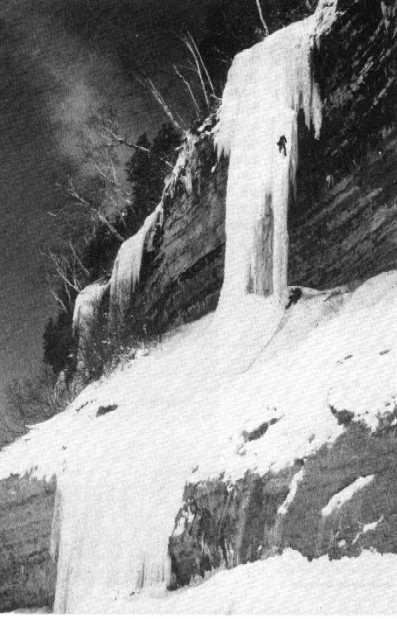
Click here for full size image (325 kb)
Source: Unknown
Because bedrock is required to create waterfalls, most of Michigan's waterfalls are in the
UP, where bedrock is close to the surface. Only in the northermost parts of the
lower peninsula is bedrock close enough to the surface (i.e., the glacial deposits are
thin enough) to allow for waterfalls to occur.
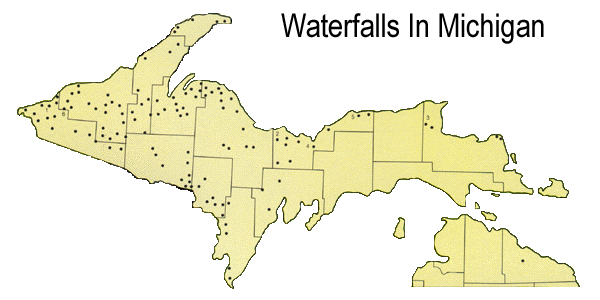
Source: Atlas of Michigan, ed. Lawrence M. Sommers, 1977.
TYPES of waterfall setup mechanisms
1. Many of Michigan's waterfalls occur where hard Au Train dolomite overlies relatively
softer Cambrian sandstones, such as in the Munising area. Here, the softer Chapel Rock and Miner’s Castle sandstones lie under the harder,
Ordivician-age sandy dolomite rocks. The dolomite forms a caprock, and waterfalls
form.
Examples of waterfalls formed in this way include Upper and Lower
Tahquamenon (or "root beer") Falls (see below),
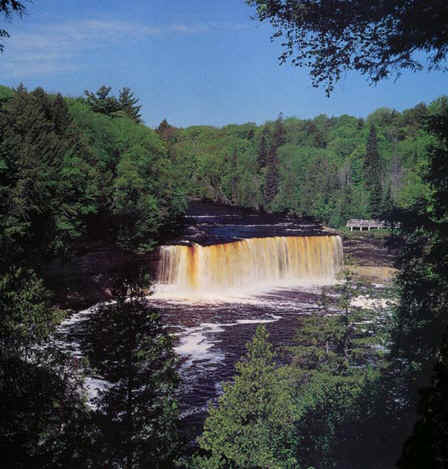
Source:
Photograph by Randy Schaetzl, Professor of Geography - Michigan State University
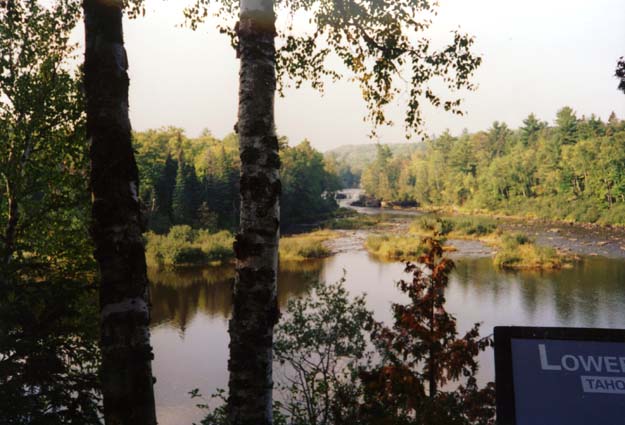
Source:
Photograph by Randy Schaetzl, Professor of Geography - Michigan State University
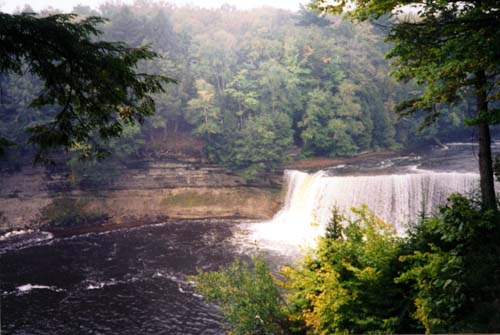
Source:
Photograph by Randy Schaetzl, Professor of Geography - Michigan State University

Source:
Photograph by Randy Schaetzl, Professor of Geography - Michigan State University
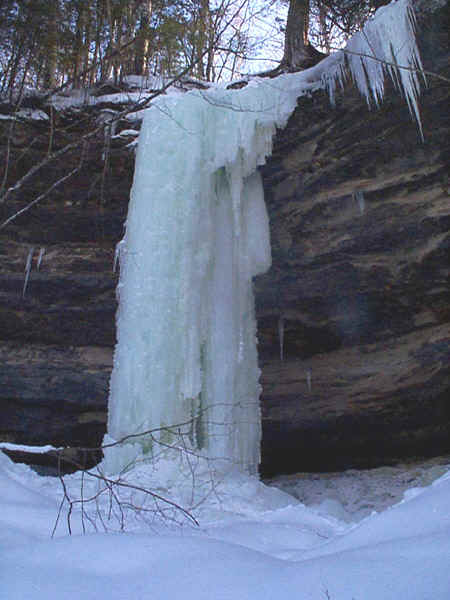
Source: Photograph by Randy Schaetzl, Professor of Geography - Michigan State University
Laughing Whitefish Falls, Au Train Falls, and many others. The diagram below shows where
such waterfalls occur.

Source: Dorr and Eschmann, Geology of Michigan (1970) University of Michigan
2. In Northeastern Lower Michigan, falls such as Ocqueoc Falls (below) occur where harder layers of dolomite and limestone overlie softer layers of the same formation. Ocqueoc Falls is the largest falls in the lower peninsula.
Source: Photograph by Randy Schaetzl, Professor of Geography - Michigan State University
3. Finally, in the Copper Range and on the Keweenaw Peninsula, waterfalls occur as
water cascades over the various layers of the Portage Lake Lava formation, long since
hardened into a rock called basalt. Each lava flow has unique geologic
characteristics that make it softer or harder than the rocks below and above--the perfect
setup for waterfall formation.
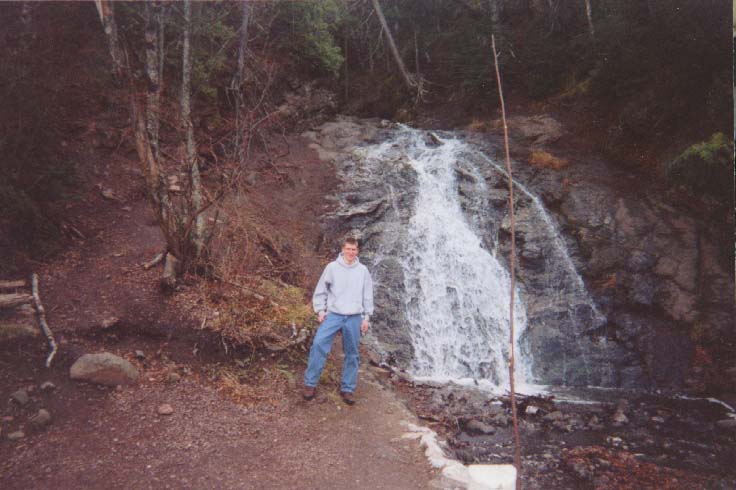
Source:
Photograph by Randy Schaetzl, Professor of Geography - Michigan State University
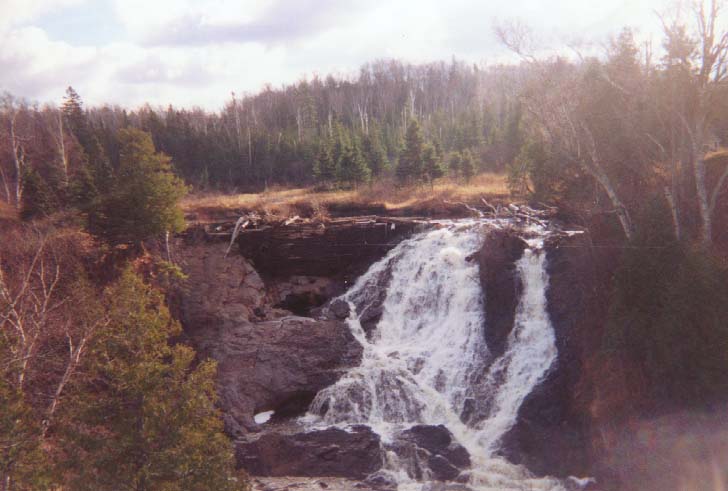
Source: Photograph by Randy Schaetzl, Professor of Geography - Michigan State University
This material has been compiled for educational use only, and may not be reproduced without permission. One copy may be printed for personal use. Please contact Randall Schaetzl (soils@msu.edu) for more information or permissions.